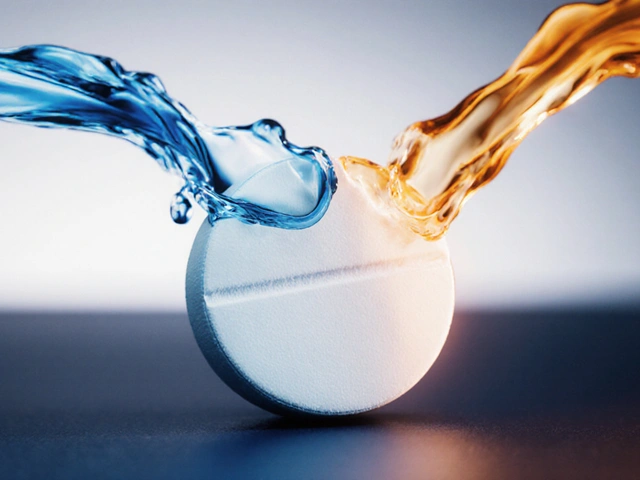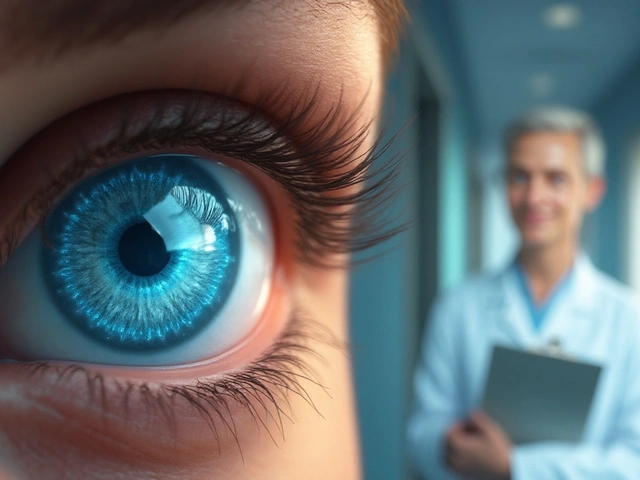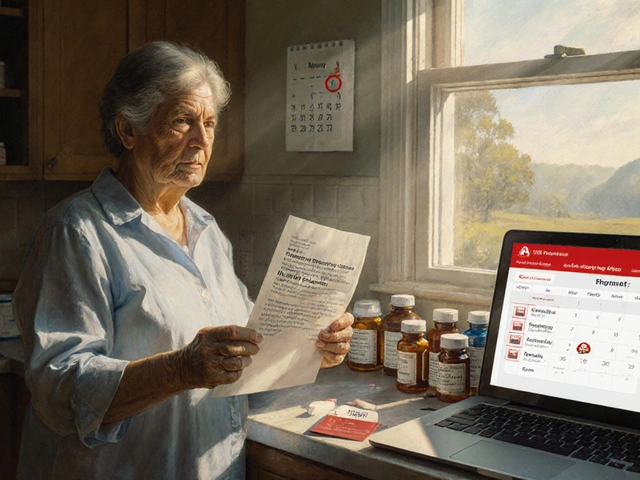What Is Autoimmune Uveitis?
Autoimmune uveitis is when your immune system mistakenly attacks the uvea-the middle layer of your eye that includes the iris, ciliary body, and choroid. This causes inflammation, swelling, and damage that can lead to blurry vision, eye pain, light sensitivity, and even permanent vision loss if not treated. Unlike infections that trigger uveitis, this form is driven by your own immune system going rogue. It’s rare-fewer than 200,000 people in the U.S. have it-but it’s serious. It doesn’t just affect your eyes; it often links to bigger autoimmune diseases like ankylosing spondylitis, lupus, Crohn’s, or rheumatoid arthritis.
Why Steroids Are Used-And Why They’re Not the Full Answer
Corticosteroids, whether as eye drops, injections, or pills, are the first line of defense. They work fast to calm down inflammation. For someone with sudden, severe uveitis, steroids can mean the difference between keeping their vision and losing it. But here’s the catch: long-term steroid use creates new problems. Cataracts form. Eye pressure rises, leading to glaucoma. Weight gain, bone thinning, high blood sugar, and mood swings become daily struggles. The NHS and Cleveland Clinic both warn that steroids are a bridge, not a destination. If you need them for more than a few months, you’re at risk of damage that’s harder to fix than the original inflammation.
What Is Steroid-Sparing Therapy?
Steroid-sparing therapy means using other drugs to control inflammation so you can reduce or stop steroids altogether. These aren’t experimental-they’re backed by clinical guidelines and real-world use. The goal? Keep your eyes safe without wrecking your body. Common options include methotrexate, cyclosporine, and biologics like adalimumab (Humira). These drugs don’t just suppress the immune system broadly; they target specific parts of the inflammation pathway. Humira, for example, blocks TNF-alpha, a protein that fuels eye inflammation. It’s the first FDA-approved biologic specifically for non-infectious uveitis, making it a game-changer since its approval in 2016.

How Doctors Decide Which Treatment to Use
There’s no one-size-fits-all. Your treatment depends on three things: where the inflammation is (front, middle, or back of the eye), how bad it is, and whether you have another autoimmune disease. A patient with uveitis tied to Crohn’s might get Humira because it works for both. Someone with mild anterior uveitis might start with methotrexate and eye drops. If you’re a child, doctors might lean toward infliximab-Dr. Nisha Acharya’s research at UT Southwestern showed strong results in pediatric cases, with kids needing far fewer steroids after starting treatment. The key is collaboration. Rheumatologists and ophthalmologists need to talk. A single doctor can’t manage this alone.
How Diagnosis Happens Before Treatment Starts
Before you even get a drug, you need to be sure it’s autoimmune. Infectious uveitis-caused by viruses, bacteria, or parasites-needs antibiotics or antivirals, not immunosuppressants. Mistake the cause, and you make things worse. Diagnosis starts with a slit-lamp exam, then moves to OCT scans to check for swelling in the retina, and fluorescein angiography to see blood flow in the eye. Blood tests look for markers like HLA-B27 (linked to ankylosing spondylitis) or ACE levels (suggestive of sarcoidosis). You might also get an MRI or chest X-ray if sarcoidosis is suspected. Skipping these steps risks giving you the wrong treatment-and that’s dangerous.
The Real-World Impact: Quality of Life After Starting Steroid-Sparing Therapy
Patients who switch from long-term steroids to steroid-sparing drugs often report feeling like themselves again. No more moon face. No more insomnia from prednisone. No more fear of broken bones. But it’s not perfect. Immunosuppressants lower your defenses. You’re more prone to infections-cold sores, urinary tract infections, even pneumonia. Regular blood tests are needed to monitor liver and kidney function. Some people feel nauseous or get headaches. The NHS recommends follow-up visits every few weeks at first, then every few months, to check for side effects and make sure the inflammation stays under control. The trade-off? A better long-term future for your eyes and your body.

What’s Coming Next in Treatment
The field is moving fast. Seven new drugs targeting different parts of the immune system are in clinical trials. Some block interleukins like IL-6 or IL-17, others tweak the JAK-STAT pathway. These could help people who don’t respond to TNF inhibitors. Researchers are also exploring genetic markers and protein signatures that could predict which drug will work best for you-personalized medicine for uveitis. In 2023, specialized uveitis clinics in the U.S. jumped from 15 to over 50. That means more access to experts who know how to balance these complex treatments. The future isn’t just about stopping steroids-it’s about matching the right drug to the right person at the right time.
What You Can Do Right Now
If you’ve been diagnosed with autoimmune uveitis, ask your doctor these questions: Is my uveitis linked to another condition? Have we ruled out infection? What’s my plan for reducing steroids? What side effects should I watch for? Don’t wait for symptoms to worsen. Early treatment prevents permanent damage. Keep all your appointments-even if you feel fine. Uveitis can flare without pain. Use reminders for blood tests and eye scans. Join a patient support group. You’re not alone. And if your current treatment isn’t working, speak up. There are options beyond the first drug they give you.
Why This Matters Beyond the Eyes
Autoimmune uveitis doesn’t exist in isolation. It’s a signal that your immune system is out of balance. Treating it isn’t just about saving vision-it’s about managing a whole-body condition. The same drugs that help your eyes might also ease joint pain from rheumatoid arthritis or reduce bowel inflammation in Crohn’s. That’s why seeing a rheumatologist isn’t optional-it’s essential. When eye and immune health are treated together, outcomes improve dramatically. The days of siloed care are over. The future is integrated.
Can autoimmune uveitis cause permanent vision loss?
Yes, if left untreated or poorly managed. Chronic inflammation can lead to cataracts, glaucoma, macular edema, retinal detachment, or optic nerve damage-all of which can cause irreversible vision loss. Early diagnosis and consistent treatment are critical to prevent these outcomes.
Is Humira the only FDA-approved drug for autoimmune uveitis?
As of 2025, Humira (adalimumab) is the only biologic specifically approved by the FDA for non-infectious uveitis. However, other TNF inhibitors like infliximab and etanercept are widely used off-label and supported by clinical evidence. More drugs are in trials, and approvals are expected in the coming years.
How long does it take for steroid-sparing drugs to work?
It varies. Methotrexate and cyclosporine can take 6 to 12 weeks to show full effect. Biologics like Humira often start working in 2 to 6 weeks. Steroid reduction usually begins after the first few months, once inflammation is under control. Patience and monitoring are key-these drugs aren’t instant fixes.
Can I stop all steroids once I start steroid-sparing therapy?
Many patients can reduce or stop steroids entirely, but not always immediately. Doctors taper steroids slowly to avoid rebound inflammation. Some people need a low dose long-term, especially if their uveitis is very active. The goal is the lowest possible dose for the shortest time-never abrupt withdrawal.
Are there natural alternatives to steroid-sparing drugs?
No proven natural alternatives exist for controlling autoimmune uveitis. Supplements like omega-3s or turmeric may support general immune health, but they cannot replace immunosuppressants or biologics. Relying on them instead of medical treatment risks permanent vision damage. Always discuss any supplements with your doctor.
How often do I need eye exams if I’m on steroid-sparing therapy?
Initially, every 2 to 4 weeks to monitor response and side effects. Once stable, every 3 to 6 months. Blood tests for liver, kidney, and blood cell counts are typically done monthly at first, then every 2 to 3 months. Don’t skip these-even if you feel fine. Uveitis can flare silently.
What should I do if I get sick while on immunosuppressants?
Call your doctor immediately. Infections can become serious quickly when your immune system is suppressed. You may need to pause your medication temporarily. Avoid close contact with sick people, get annual flu and pneumonia vaccines (but avoid live vaccines), and practice good hand hygiene.





